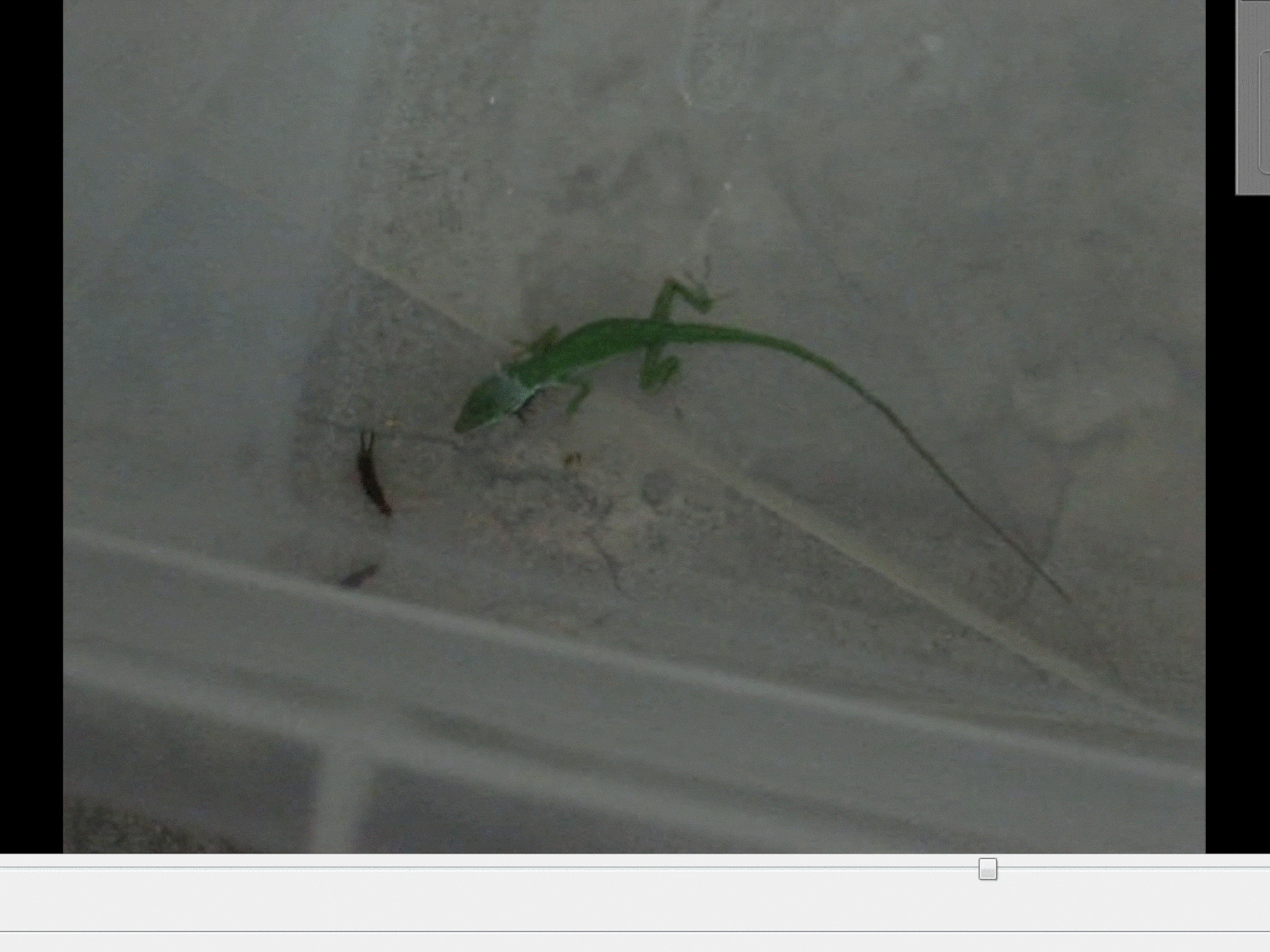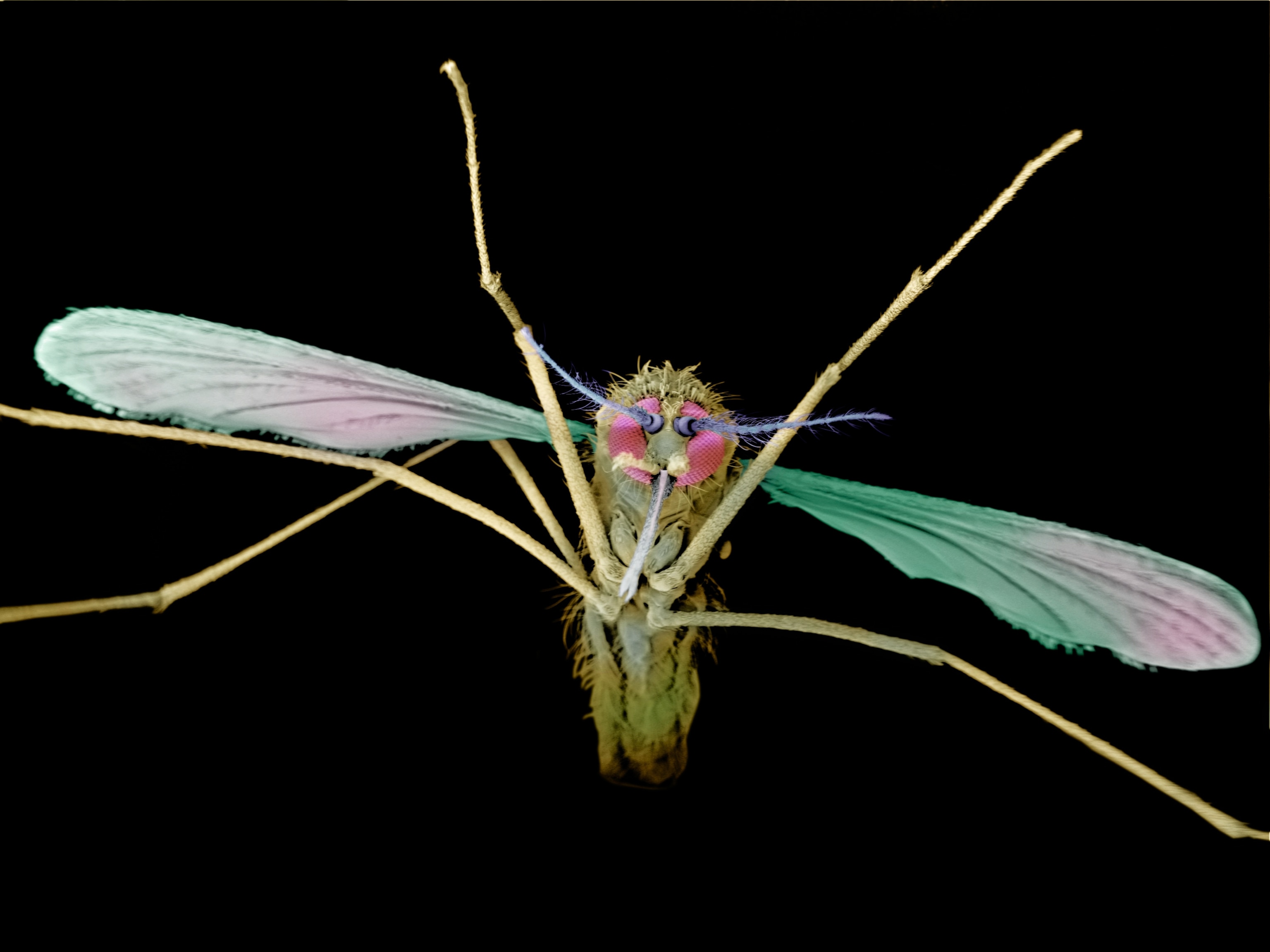
Meet the Bug That Turns into a Rotting-Flesh Stink Bomb
Shore earwigs spit out a vile-smelling substance that causes predators to instantly spit them out—a first in insects, a new study says.
Insects may be the food of the future, but here's a tip—never eat a shore earwig.
The insect, if you were to pop it in your mouth, would turn into a rotting-flesh stink bomb, according to a new study.
Scientists discovered the earwig's stomach-churning defense when they gave anole lizards the opportunity to eat the creepy-crawlies.
When the lizards bit the earwigs, the bugs squirted a vile-smelling substance from their mouths that made the lizards instantly spit them out.
Within milliseconds of taking a bite, the lizards "whipped their head and flung the earwig tens of centimeters away," study leader John Byers, of the the U.S. Arid-Land Agricultural Research Center in Maricopa, Arizona, said in an email.

Lab video footage also shows the lizards apparently attempting to wipe away the "taste" of their rejected meal.
Once bitten, twice shy, the lizards "never tried to eat or attack another earwig," Byers said.
The new findings, published June 13 in the journal The Science of Nature, may mark the first known case of an insect that mimics rancid odors to dupe predators.
No Thanks, I'll Pass
The team's chemical analysis showed that the shore earwig's vile stink relies on two sulfur-based compounds, dimethyl disulfide and dimethyl trisulfide.
Certain plants and fungi use those compounds to mimic the whiff of rotting animals or feces, for example to attract pollinating flies that can spread fungal spores. (Related: "Stop and Smell the Corpse Flower.")
Byers thinks the earwig's rancid smell—released only when under attack— is aimed at deceiving vertebrate predators such as reptiles, birds, and small mammals.
Most vertebrates, with the exception of carrion-feeders like vultures, are repulsed by rotting smells, as they "want to avoid botulism, salmonella, and other bacteria that are known to be harmful," he said. (Also see "Secrets of Smell: Different Nose Parts for Stinky, Sweet.")
Tina Gasch of the Julius Kühn Institute in Berlin, Germany, who has investigated earwigs' chemical defenses, isn't at all surprised that shore earwigs make such a stink.
Gasch says earwig species often employ such defenses, emitting substances that are "repugnant, repelling, irritating, but most of all toxic."
Mimic or Not?
She strongly suspects, however, that the odor is the earwig's independent creation, and that it's not mimicking rotting flesh.
Earwigs have various defensive glands that emit substances that "are very reactive and have a very distinct smell," she says, so any similarity with rotting flesh is likely a coincidence.
Another insect wards off predators using a smell like carrion and feces—a species of burying beetle called Nicrophorus vespilloides, she notes. (Also see "Why Are Corpse-Eating Beetles Being Released Into the Wild?")
Gasch adds that "no one has postulated, so far, that [the beetle's] defensive secretion mimics rotten flesh to fool predators purposely."
Paralyzing Prey
Whether a case of mimicry or not, the shore earwig's smell doesn't appear to fool insect predators, which in this study don't seem to be repelled by rotting smells.
In experiments, the earwigs' stinky defense failed to deter attacks from harvester ants. The earwigs had to rely instead on their large pair of forceps.
But the sulfide compounds produced in the earwig's salivary glands may have another role for insects, Byers said.
Dimethyl disulfide has previously been found to act as a neurotoxin. Since the earwigs are themselves formidable predators—Byers has observed them in the wild tackling insects as large as crickets—he suspects that the chemical may help them paralyze prey.
Which is another good reason not to eat shore earwig. As if we needed one.




